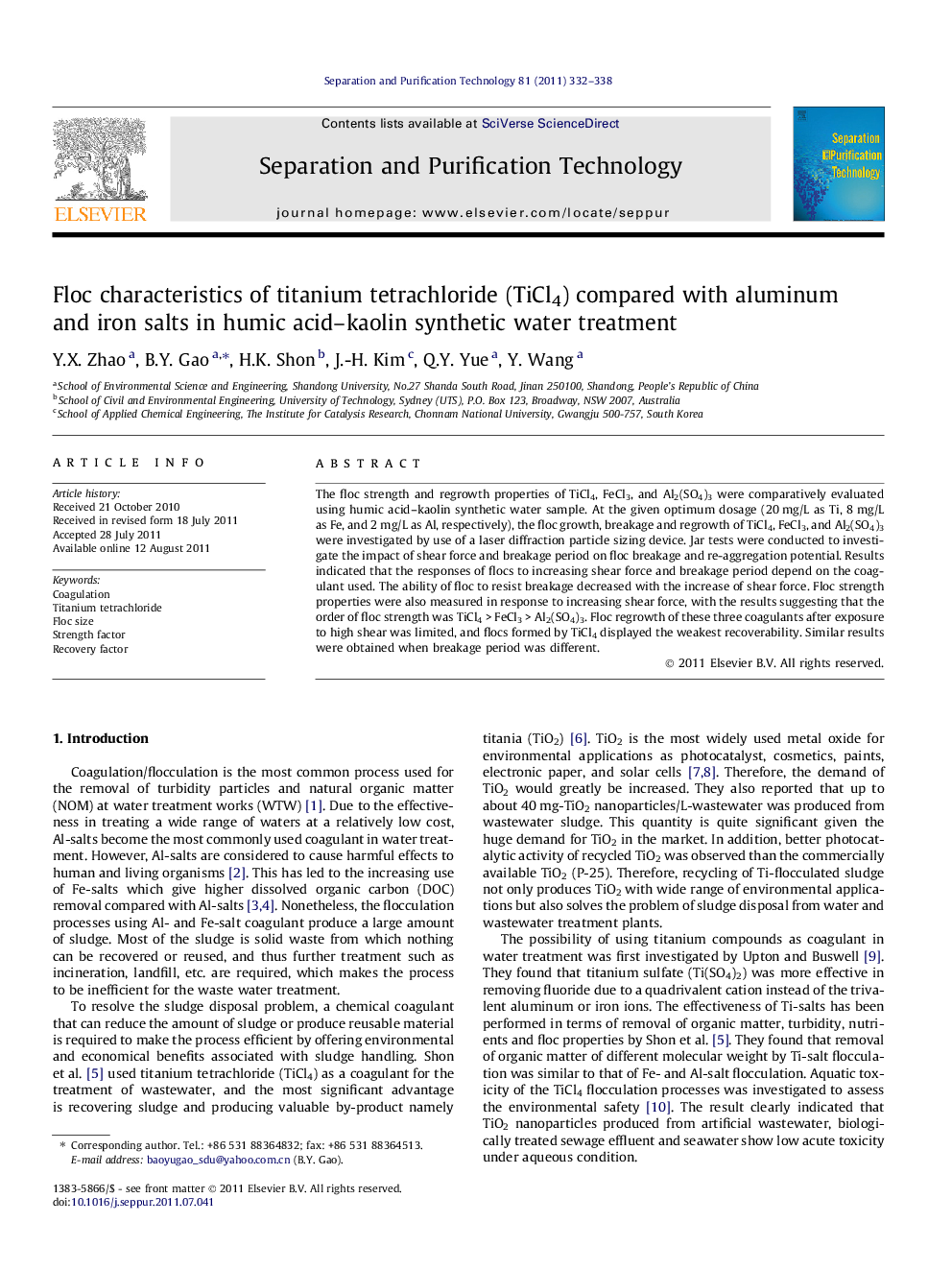| Article ID | Journal | Published Year | Pages | File Type |
|---|---|---|---|---|
| 642519 | Separation and Purification Technology | 2011 | 7 Pages |
The floc strength and regrowth properties of TiCl4, FeCl3, and Al2(SO4)3 were comparatively evaluated using humic acid–kaolin synthetic water sample. At the given optimum dosage (20 mg/L as Ti, 8 mg/L as Fe, and 2 mg/L as Al, respectively), the floc growth, breakage and regrowth of TiCl4, FeCl3, and Al2(SO4)3 were investigated by use of a laser diffraction particle sizing device. Jar tests were conducted to investigate the impact of shear force and breakage period on floc breakage and re-aggregation potential. Results indicated that the responses of flocs to increasing shear force and breakage period depend on the coagulant used. The ability of floc to resist breakage decreased with the increase of shear force. Floc strength properties were also measured in response to increasing shear force, with the results suggesting that the order of floc strength was TiCl4 > FeCl3 > Al2(SO4)3. Floc regrowth of these three coagulants after exposure to high shear was limited, and flocs formed by TiCl4 displayed the weakest recoverability. Similar results were obtained when breakage period was different.
► Characteristics of flocs formed by TiCl4, Al2(SO4)3, and FeCl3 were investigated. ► The effect of shear force and breakage period on floc property was investigated. ► The relationship between floc strength and coagulation mechanism was discussed.
